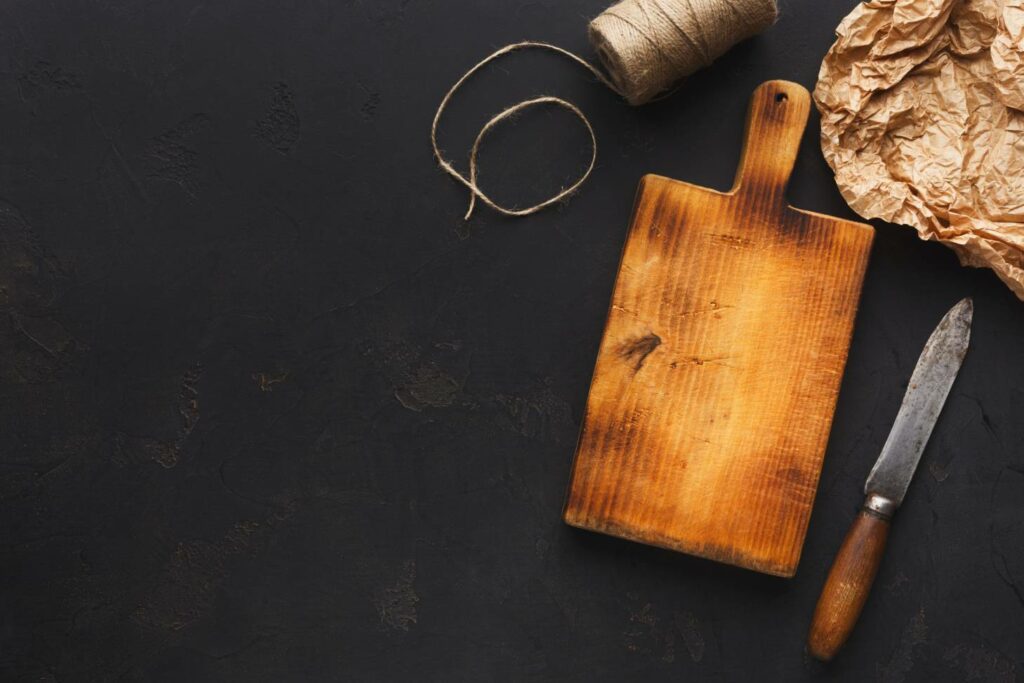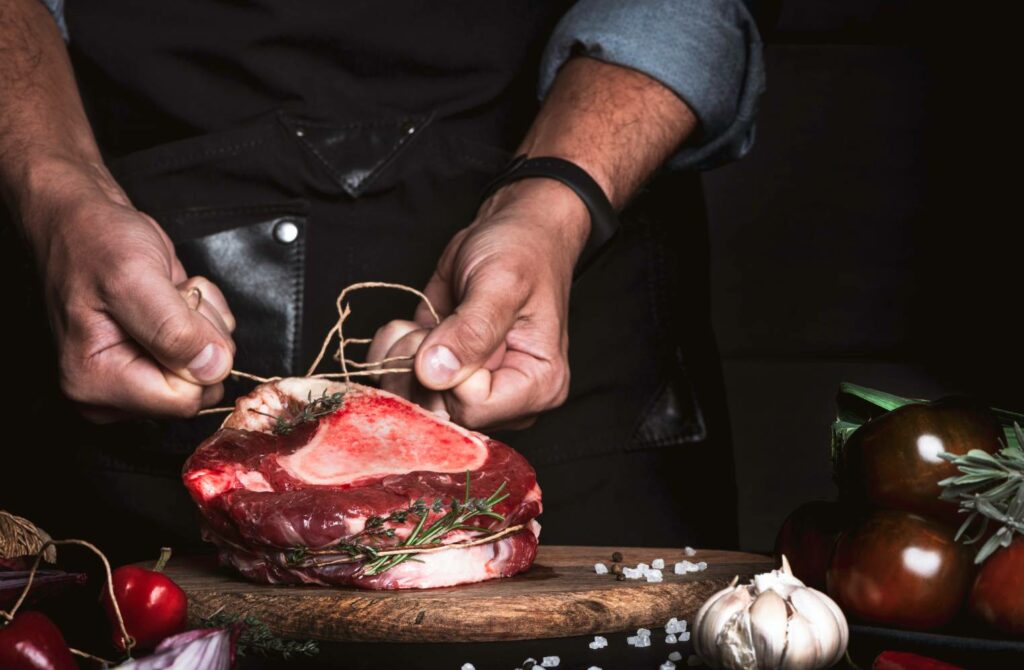Can You Use Jute Twine for Cooking? Alternatives, Facts, & FAQ
-
Pete Ortiz
- Last updated:

Cooking twine, also known as Butcher’s twine, are useful items to have in any kitchen. They are used to bind certain types of food in culinary applications. Cooking twine can be made from different fabrics, but jute twine seems to be popular in the culinary world.
However, it is not safe to cook with jute twine. It is made from the same fibers that make burlap and hessian fabric. The material is highly flammable and can shed fibrous materials into your food. Furthermore, it burns and breaks in the oven.
In this article, we will discuss the characteristics of jute twine and why it is unsafe for cooking. We will also highlight alternatives that are safer for cooking. Read on to learn more.
Why Do People Use Cooking Twine?

If you enjoy cooking meat, cooking twine usually comes in handy. The main purpose of kitchen twine is to bind your meat so that it cooks in as compact a shape as possible to promote even cooking and prevent burning. This allows chefs to create a very new recipe as well as infuse the flavors together.
Cooking twine is mostly used in cooking rolled meat products like gammon and stuffed pork shoulder and chicken. It can also be used to steam food in parchment bags as well. As functional as cooking twine is in the kitchen, it is inedible. Therefore, cooking twine has to be removed before serving the food.
Is Jute Twine Safe for Cooking?
As you may have gathered, cooking twine can be made from different materials, some natural and some synthetic. However, cooking twine made from jute should not be used in culinary applications.
- Sheds Fibers in the Food: If you have worked with burlap sacks before, you have probably noticed just how much it sheds their tiny fibers everywhere. Since jute twine is made from the same materials, the same will happen, but only this time, the fibers will be present in your food. You might be wondering if there is a way to prevent the fibers from coming off, but unfortunately, there is no cheat sheet. Immediately the fibers touch each other as you are binding the twine or making a knot. The tiny fibers will shed off and spread everywhere.
- Highly Flammable: The other reason why jute twine is not safe for use in cooking is that the material is highly flammable. At first glance, you can tell that jute fibers are very thin. When exposed to heat in the oven, they tend to break and burn. This is counterproductive because it defeats the purpose of binding food items together.
If you have to use jute twine, you should only use it for decorative purposes on food displayed on the table.
The 7 Safer Alternatives to Cooking Twine
Cooking twine is good to have around your kitchen when tying herbs or trussing a turkey, but it is hardly an essential kitchen item. Since jute twine is unsafe for cooking, what other alternatives are there? Fortunately, other twine options can achieve the same result as jute twine. Many chefs are innovative when deciding on a viable twine substitute, but if you need more options or are inexperienced in the kitchen, here are a few options that might work for you.
1. Butchers Twine

Butcher’s twine is a broad name for twine that has traditionally been used in cooking. They include cooking twine made from linen and dry-free 100% cotton, both of which are very sustainable materials.
Butcher’s twine is considered the best for use in trying roasts, trussing poultry, and holding stuffed ingredients into position. It comes in several thicknesses and is considered food-safe. In addition, unlike jute twine, it does not shed off any fibers and is more heat resistant. It can stay in an oven for several hours without breaking.
2. Dental Floss
You can also secure your mats with dental floss; it may sound far-fetched, but nylon is a USDA-certified heat and food-safe synthetic. It will secure the food in position just as a jute twine would do. However, remember to use unwaxed and plain floss to avoid giving your food a flavor of mint or even risk the melted wax igniting in the oven.
Dental floss also has more kitchen uses. For instance, it is known to cut soft cheese types like goat cheese better than a knife. Therefore, the string will come in handy in your kitchen because of its easy access and strength.
3. Aluminum Foil

You can use aluminum as a jute twine alternative if you secure it into tight ropes and wrap them around your food-like bands. Some chefs even claim that aluminum works the best with meat products compared to cooking twine, especially if you do not want to unroll. Furthermore, aluminum works better when trussing poultry like chicken and turkey.
4. Toothpicks and Wooden Skewers
Instead of wrapping your meat with a string, you can poke the rolled item with wooden skewers to prevent it from unraveling. First, soak your food item, just as you would do when cooking with a grill to prevent them from catching fire in the oven. Toothpicks are also worthy alternatives. However, if you opt to use them, you will need to count how many of them you need first to determine how many to pull out after cooking. It can be rather unsettling when somebody accidentally swallows a piece of food at the dinner table.
5. Silicone Bands

Silicone cooking bands, also known as hot bands, are good alternatives to cooking with jute twine. Food-grade silicone bands are considered safe for deep-frying, freezing, microwaving, or even use with a dishwasher. These reusable Silicone roasting bands are also used to tie steak, fruits, and vegetables. However, if you decide to invest in items like silicone to cook your meat, remember that they need to be cleaned after each use.
6. Cheese Cloths
If you want to secure some herbal ingredients, simply place them in a cheesecloth and tie a knot from the corners. Tied cheesecloths also work well with meat, poultry, and stuffed pork when braising or roasting in a liquid. This woven cotton cloth sells in seven grades, ranging from open cheesecloth to extra fine weave cheesecloths. All seven grades have culinary applications.
7. Nothing at All

If you do not have any of the suggested alternatives, you can always opt to cook your meat without any cooking twine at all. Simply leave your turkey untrussed, and tuck the wing tips under your bird or tie the bird up with its skin. You can also wrap it with aluminum to prevent burning. Proceed to place your item on the baking sheet while the seam is facing down to allow the weight of the meat to hold it together.
 Disclaimer About Using Cooking Twine Substitutes
Disclaimer About Using Cooking Twine Substitutes
When it comes to binding meat products while cooking, many people have different suggestions about what sort of roasting band to use. Some people even suggest tying your food product with embroidery floss, rubber bands, crocheting heads, or sewing threads instead of jute twine. However, some of these suggestions are downright bad ideas.
For instance, rubber bands cannot make good kitchen twine alternatives because hot rubber should never be anywhere near the food we consume. The other options may sound a bit more viable, but you have to exercise caution when using them. Embroidery floss and threads are flammable and can easily ignite in a hot oven.
If you decide to use any of the kitchen twine alternatives, like the sewing thread or floss, consider soaking to prevent the chances of catching fire. Furthermore, you should adjust your oven so that none of the twine substitutes does come too close to the heating element. Colored or waxed threads can add a different flavor and color to your food. Also, always have an extinguisher ready when using kitchen twine alternatives.
 Conclusion
Conclusion
People have been roasting and trussing for years with cooking twine. They make it easier to handle the food and help it to cook better. Kitchen twine differs in terms of strength and material, which determines how it can be used. Some twine is ideal for cooking because it is clean, safe, heat resistant, and does not affect the flavor of your food. Unfortunately, others, like the jute twine, are not safe for use in the cooking process but are perfect for decoration purposes.
Jute is not an ideal twine for kitchen use because it sheds off fibers that can get into your food. Furthermore, it features very thin fibers that can easily ignite and leave a total mess in your oven.
Fortunately, there are other more viable and safe alternatives that you can use when roasting or trussing your birds. For instance, you can use linen twine if you cannot get 100 dry cotton materials. Wooden skewers and toothpicks can also hold your food item in position as you cook. Other viable alternatives are aluminum foil, silicone bands, and unwaxed and unflavored dental floss.
- Related Read: 23 DIY Clever Jute Rope Craft Ideas You Can Make Today
Featured Image Credit: Prostock-studio, Shutterstock
Contents


 Disclaimer About Using Cooking Twine Substitutes
Disclaimer About Using Cooking Twine Substitutes